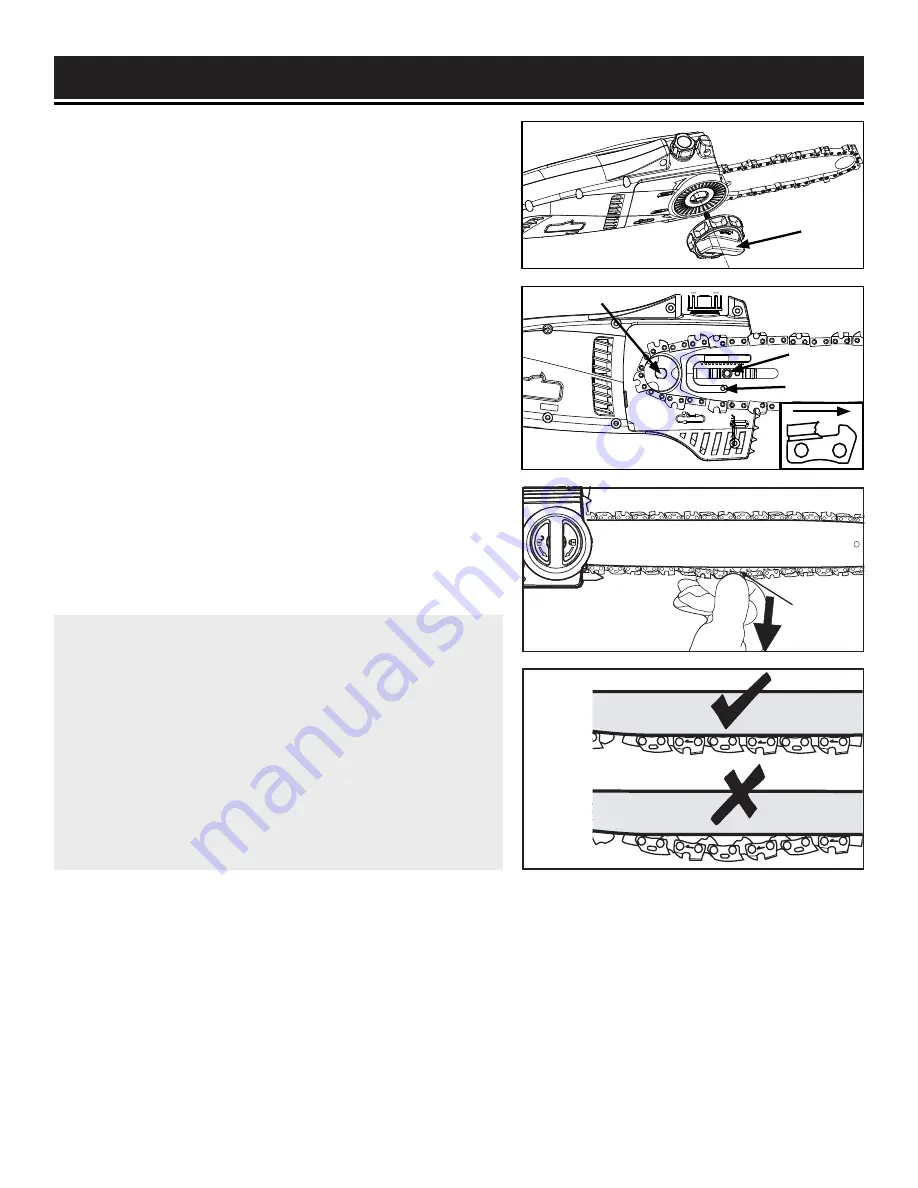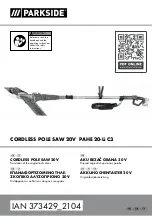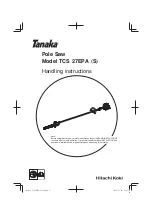
ASSEMBLY AND ADJUSTMENTS
15
ASSEMBLY OF GUIDE BAR AND SAW CHAIN
1. Place the saw body on a firm and level surface.
2. Rotate the cover release knob (Fig. 2 - 1) counter-
clockwise to remove the cover from the saw’s body.
3. While wearing protective gloves, wrap the saw chain
around the guide bar, making sure that the teeth are aimed
in the direction of rotation (Fig. 3). The chain should be
properly set in the slot running along the entire outside
edge of the guide bar.
4. Place the saw chain around the sprocket (Fig. 3 - 1)
while lining up the slot in the guide bar with the bolt (Fig.
3 - 2) at the base of the saw and the chain tensioning pin
(Fig. 3 - 3) in the guide bar’s pin hole. The chain tension-
ing pin may need adjustment (see next section) to prop-
erly align with the hole in the guide bar.
5. While holding the bar still, place the cover back onto
the saw. Adjust tension (next section).
TENSIONING THE CHAIN
NOTE
:
The saw chain must be tensioned properly
in order to ensure safe operation. The chain ten-
sion is optimal if the saw chain can be lifted 1/8 inch
(3 mm) from the center of the guide bar. Since the
saw chain heats up during operation, its length can
therefore fluctuate. Check the chain tension every 10
minutes of operation and adjust as necessary, par-
ticularly for new saw chains. Slacken the saw chain
after the work is completed since it shortens when
cooling down. In doing so, you can elongate the
chain’s life and prevent damage.
1
1
2
3
Fig. 2
Fig. 3
Fig. 4
1/8"
(3mm)
Fig. 5
1. Check the chain tension by pulling the saw chain away from the guide bar. A properly tensioned chain
should have roughly 1/8 inch (3 mm) of distance between itself and the bar guide (Fig. 4).
2. If adjustments are needed, loosen the retaining nut of the chain sprocket cover by a few rotations.
3. To adjust the saw chain tension, rotate the tension adjustment knob (the outermost knob on the cov-
er release knob). Clockwise rotation increases the tension while counter-clockwise rotation decreases
tension. A properly tensioned chain should have no sag (Fig. 5) and should only be able to be pulled
1/8 inch (3 mm) away from the guide bar of the saw. Do not over-tension the chain: this will lead to
excessive wear and reduces the life of both the bar and chain.










































